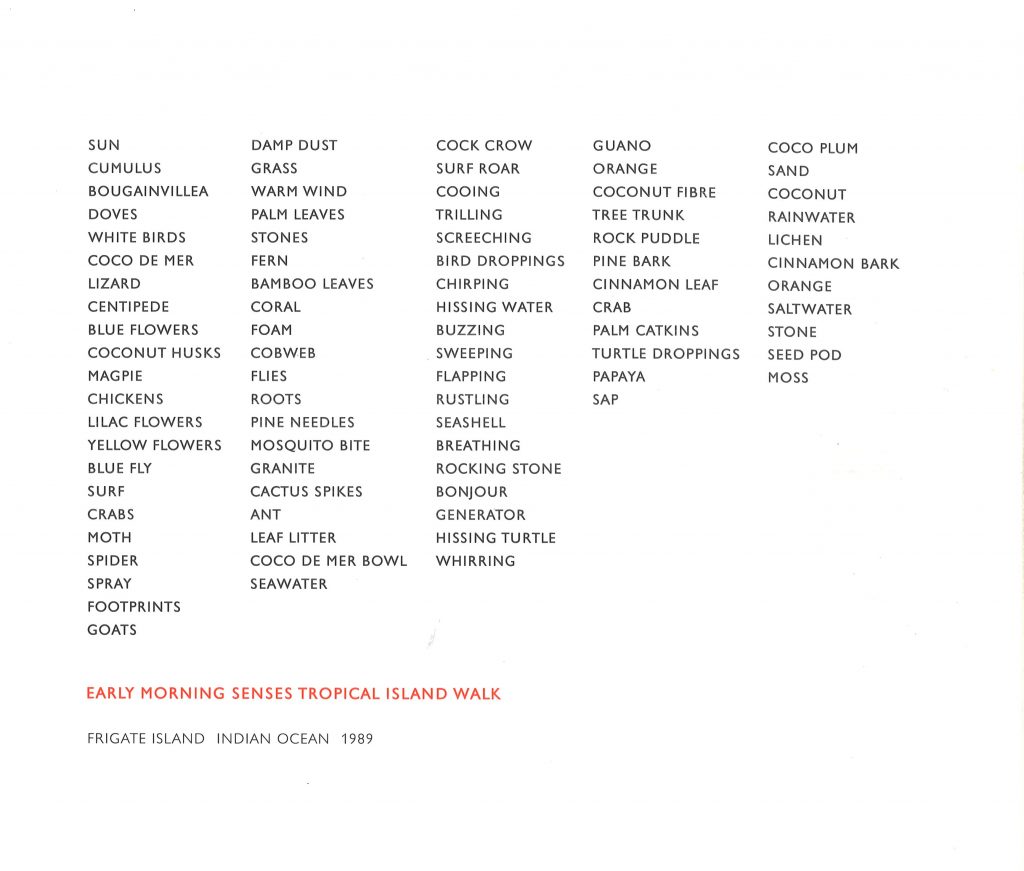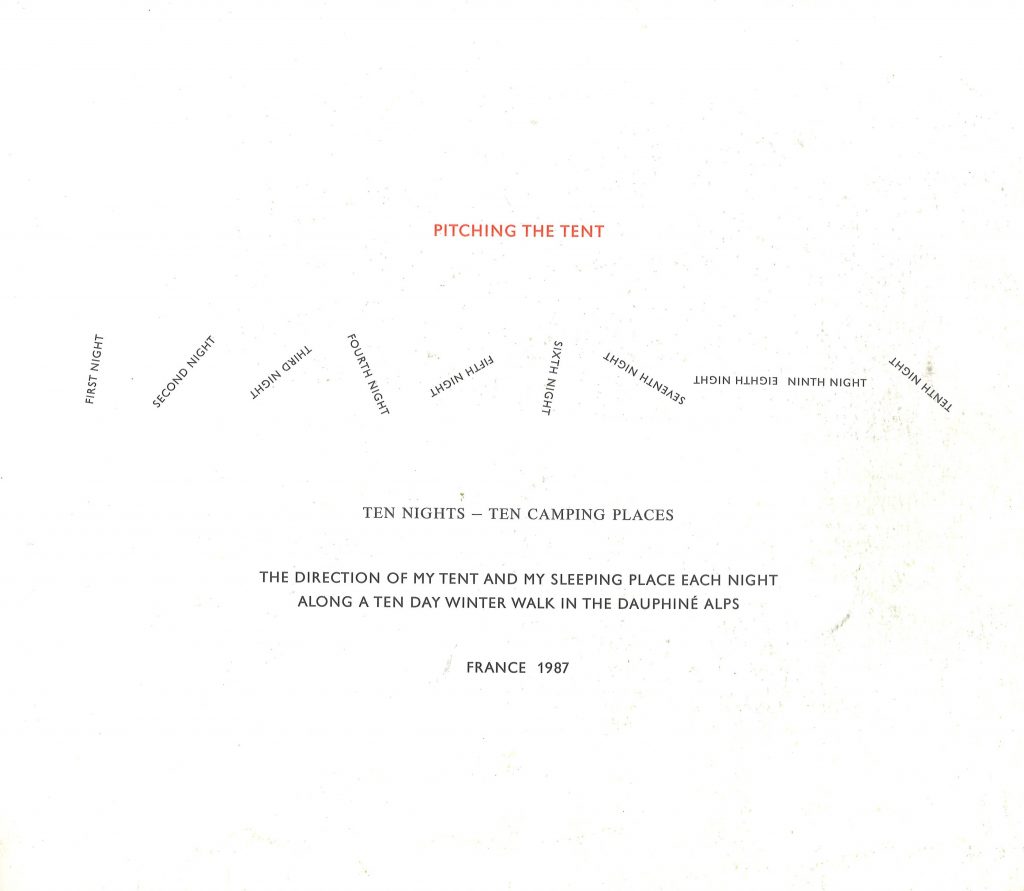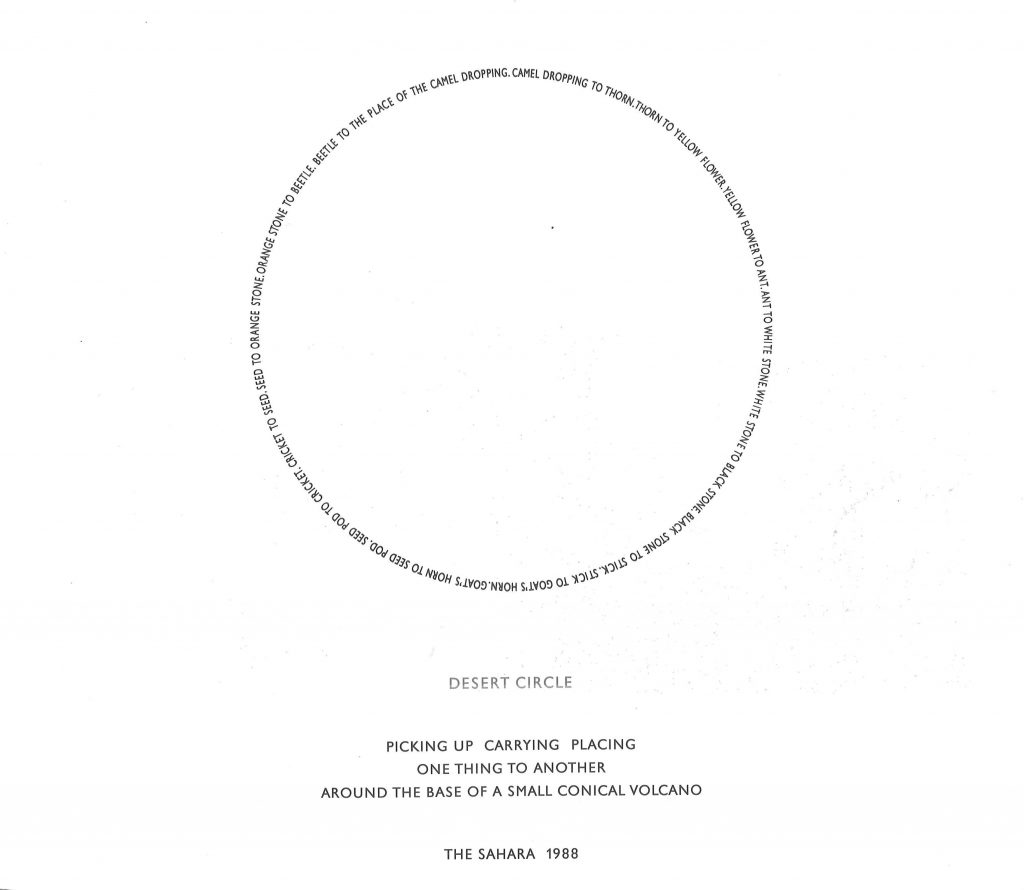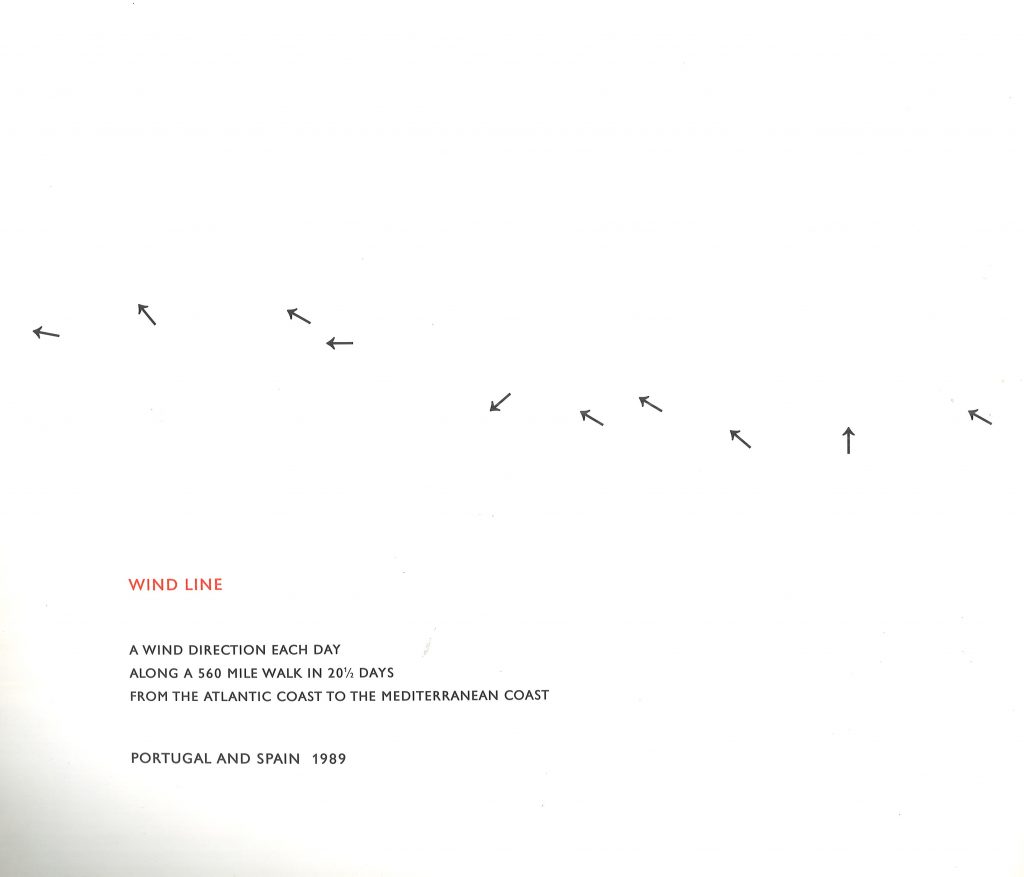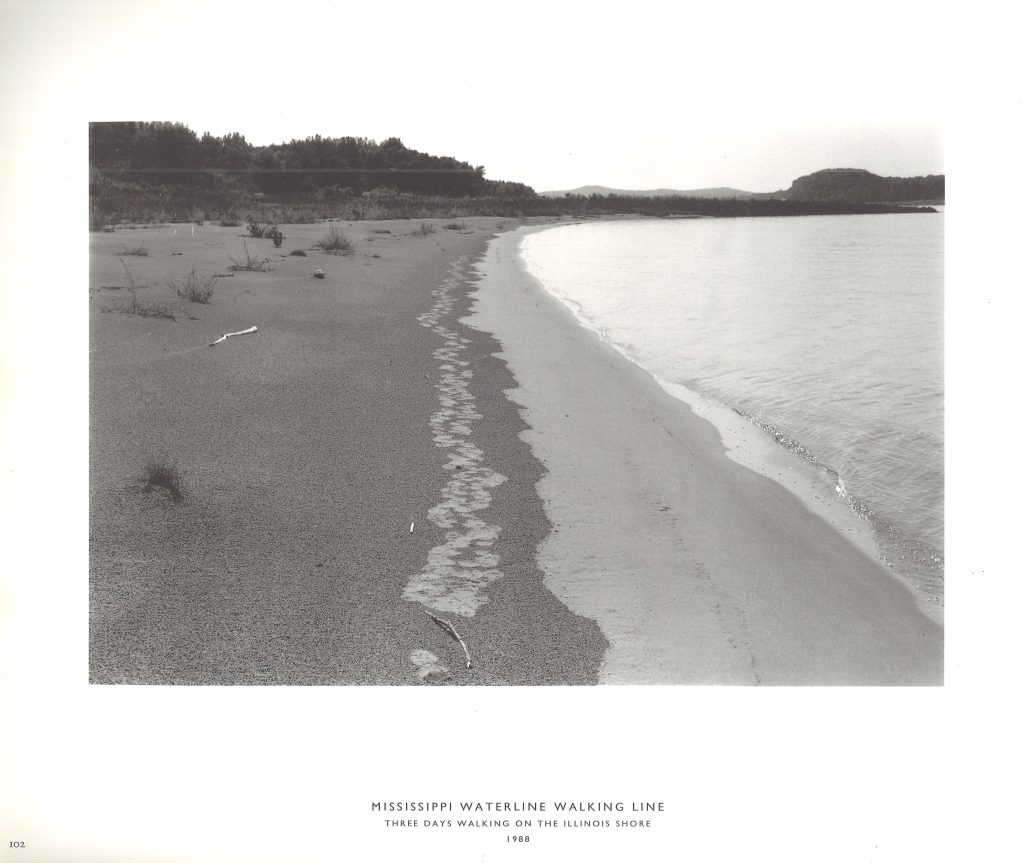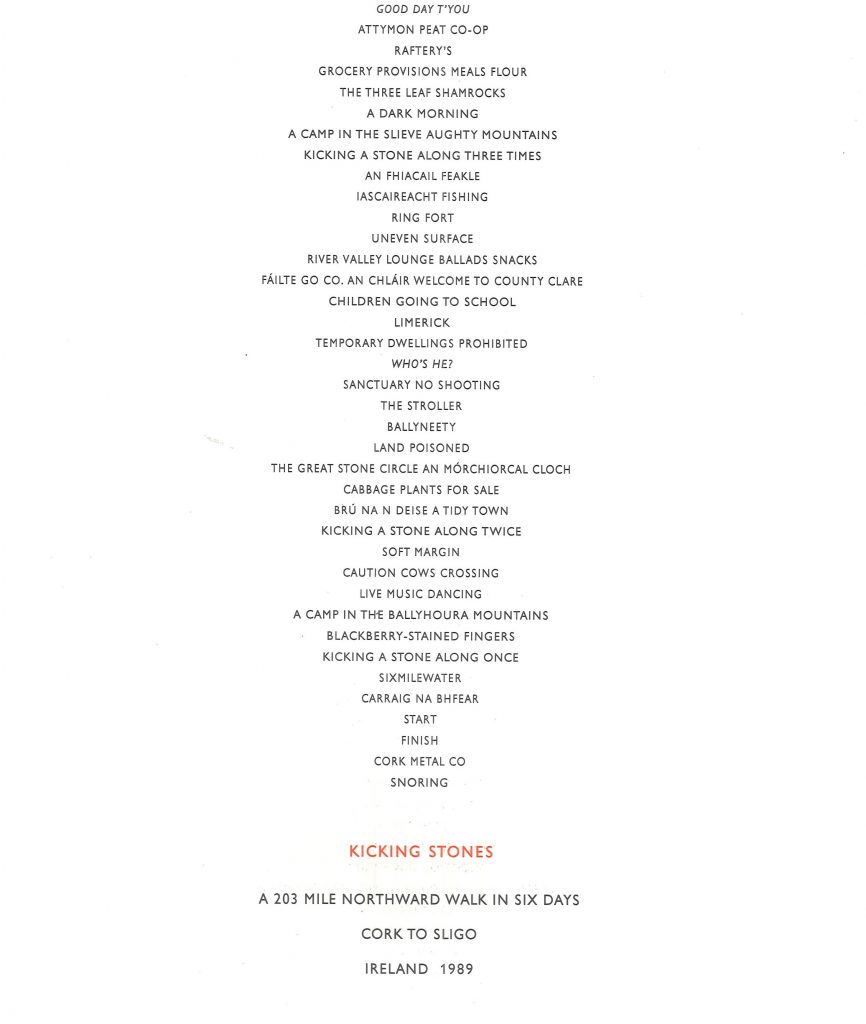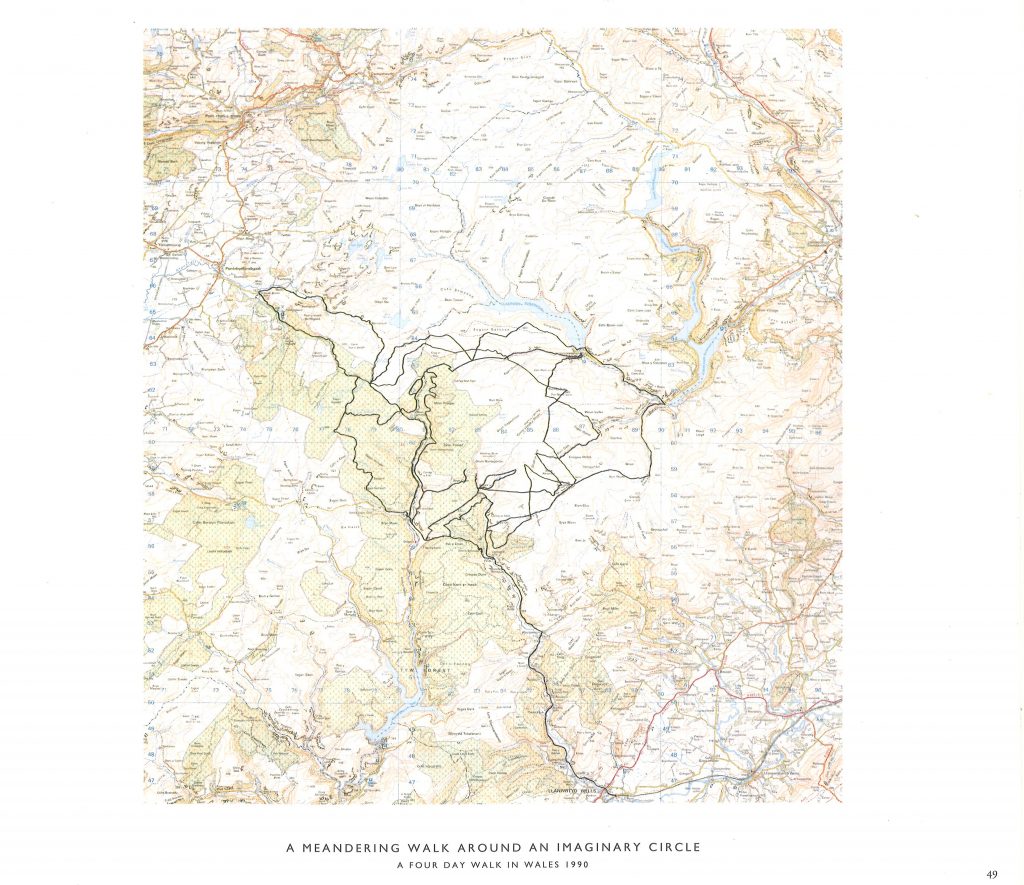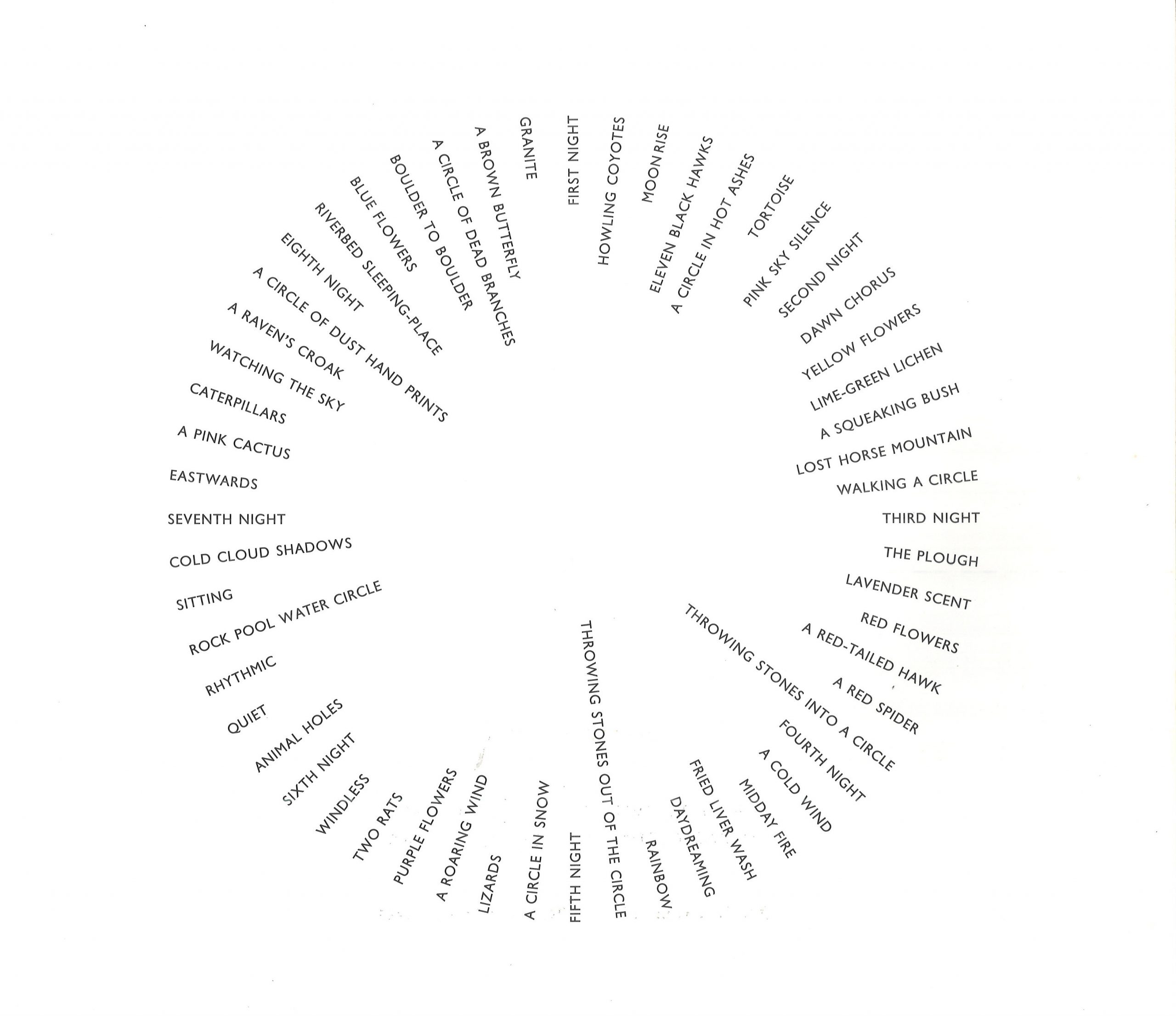Richard Long is an artist from Bristol, UK. He creates work out in nature. His first artwork of this kind was made when he was still a student in the 1960’s. He was rolling a snowball down a hill in winter. Looking back up the hill, he saw the dark path of visible earth the snowball had created over the ground. The track left on the white landscape inspired him to continue making art in this way, to show the mark he has left across a landscape for example.
The geometric lines in this piece, signify stopping and moving. The viewer can make a comparison between the two as the two canvases are displayed side by side.

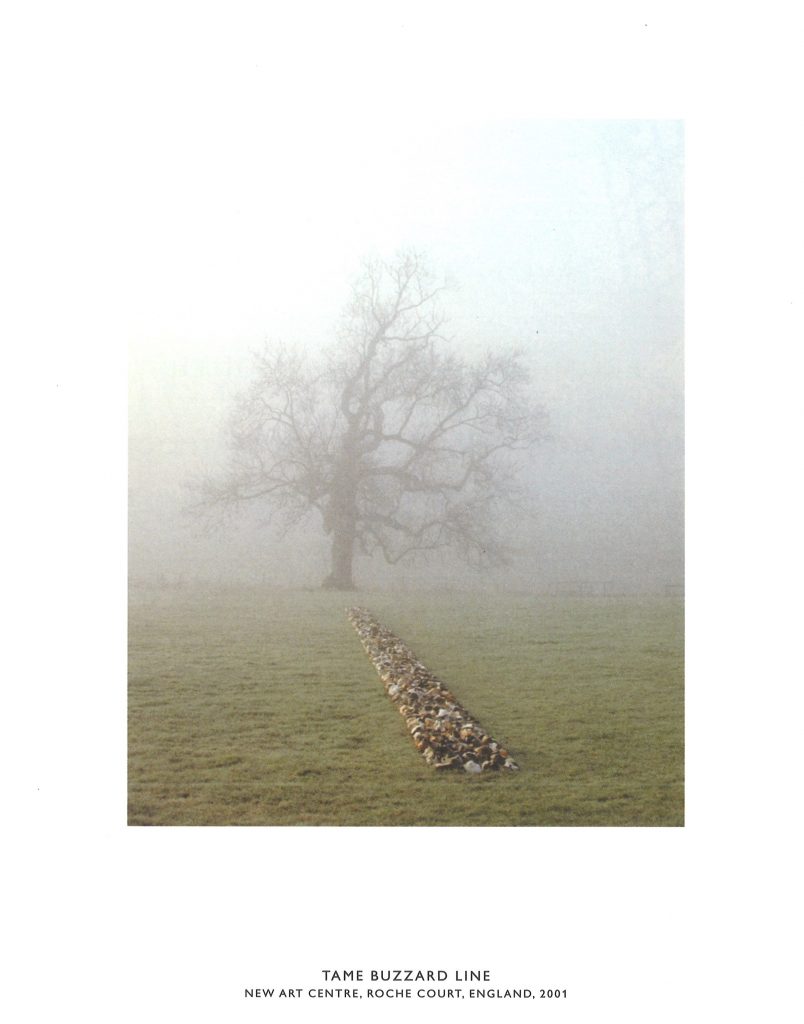
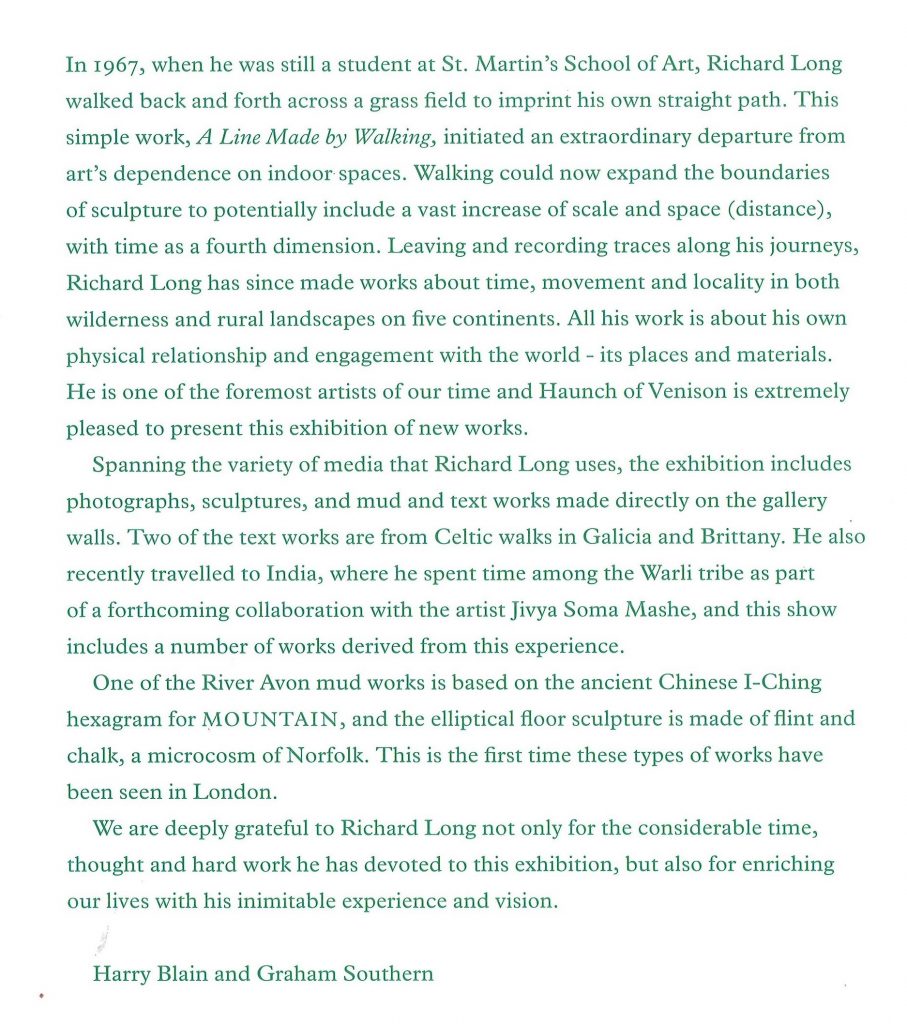
In 3 lines of text, the artist illustrates his walk. We are told where, what and when. The simplicity of the design makes the piece easy to read. He uses arrows to draw the wind direction. Although there are no natural colours in this piece, I can picture the green of nature because I know that Dartmoor is green, open and hilly because I have driven through there.
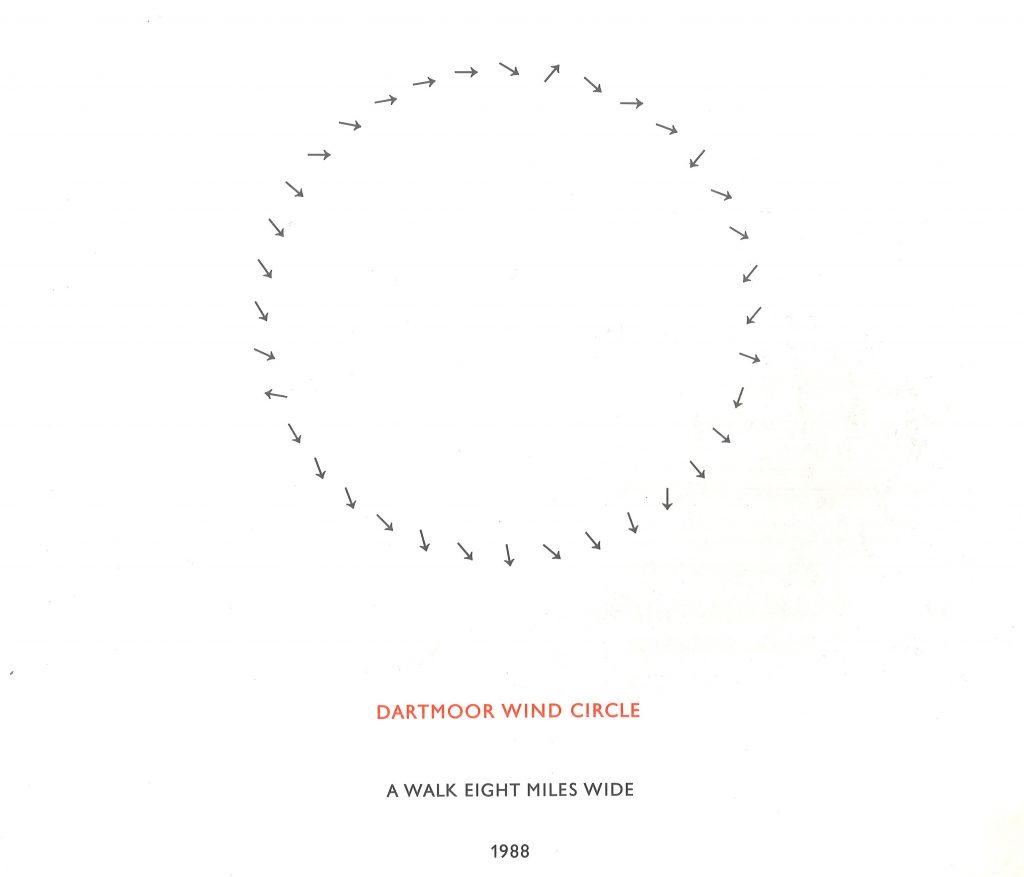
In this map, Long has used a photo of a landmark, words and lines. The combination of these elements helps us to build up a picture of the journey being mapped. He tells us about walking times and this tells us that the action was walking.
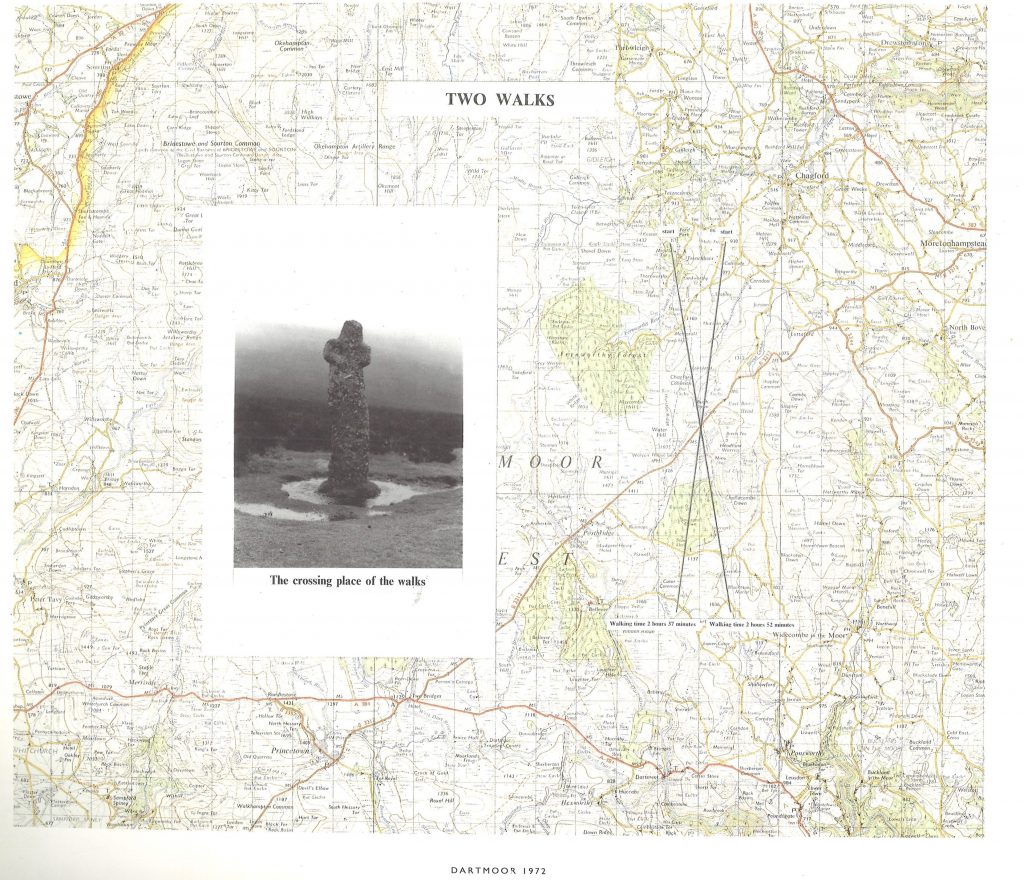
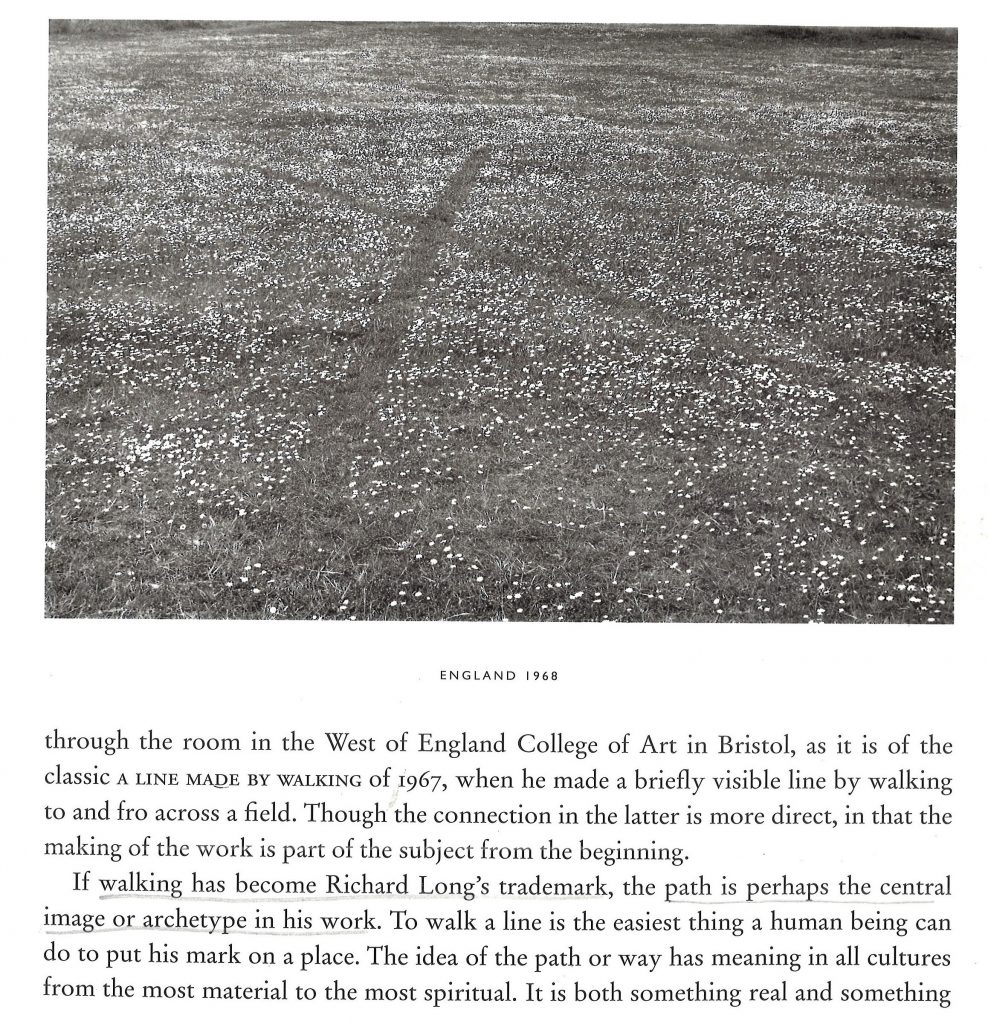
Here he has mapped the rivers across England and Wales following 1 route. The choice of blue for the text helps to signify water:
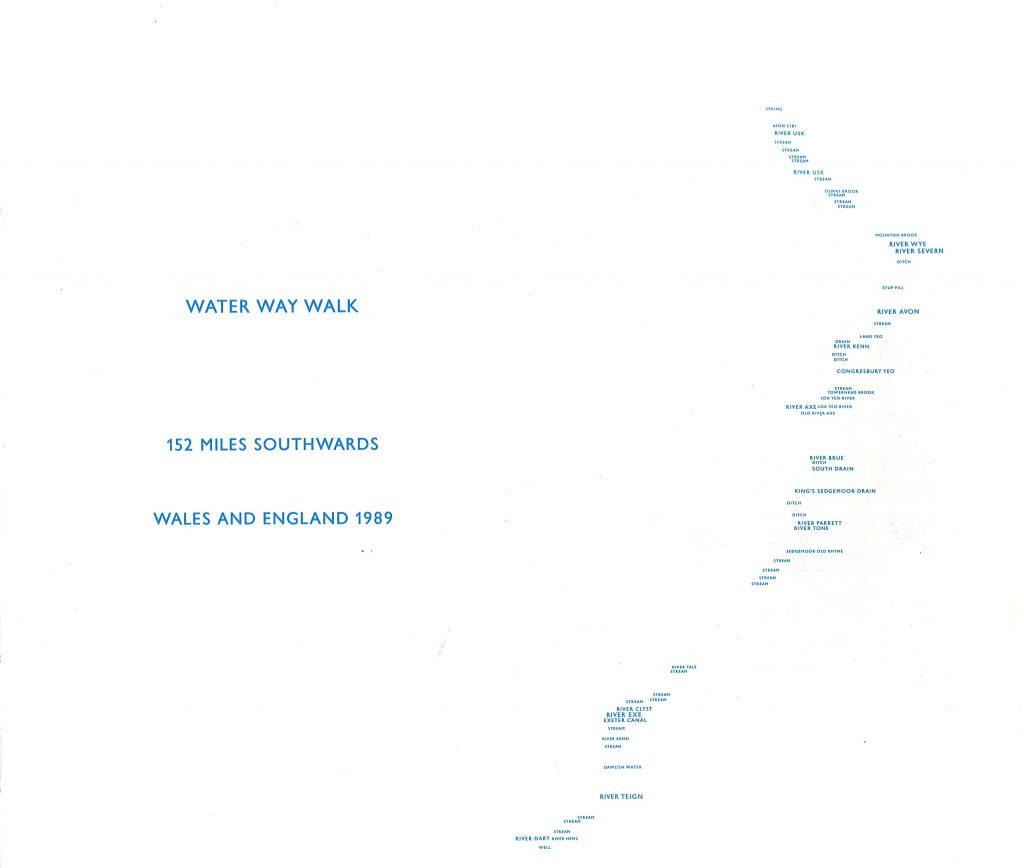
The circular formation of the words suggests the artist may have been walking in a circular route. He focuses on the things he has seen , what he has experienced and the days that have passed on the journey:

The word ‘splash’ is used to signify each time the artist has thrown a stone into the sea or river:
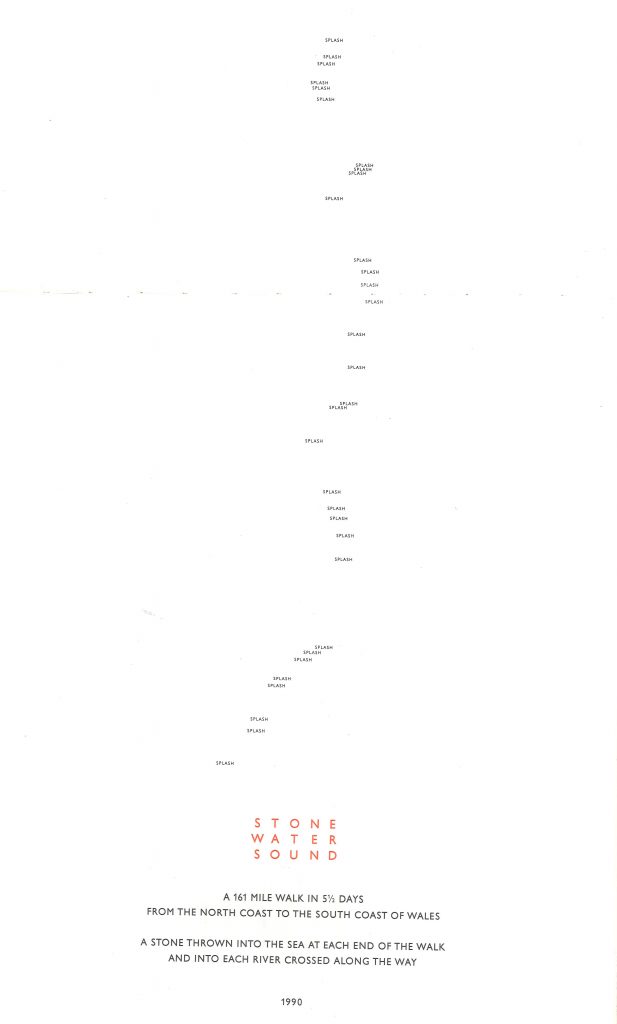
Here, Long has mapped his early morning island walk. Although the words are displayed in lists, each list gets shorter, which forms a kind of diagonal path across the page:
